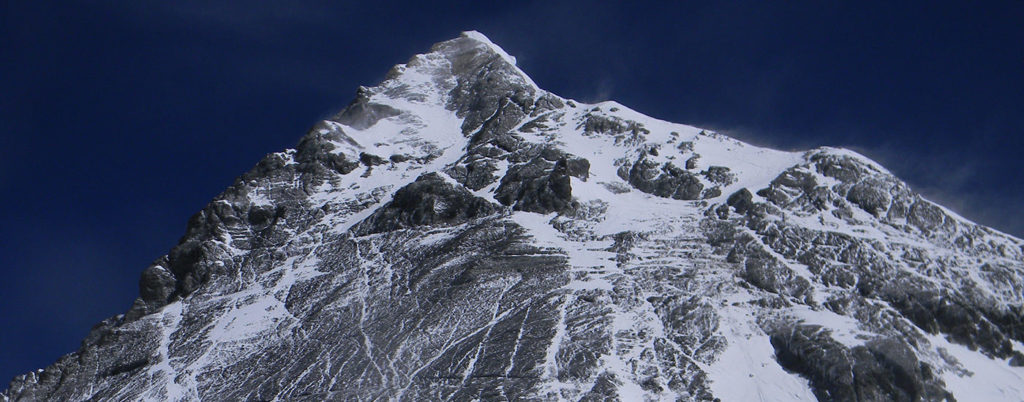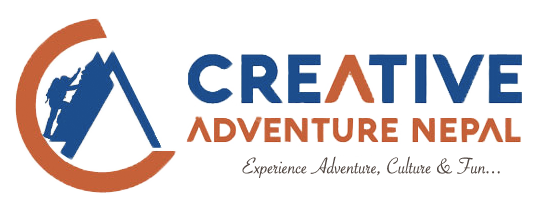
Mount Everest is the highest peak globally, standing at 29028 feet (8848 meters), and climbing toppers see themselves as the proudest and most brave people globally. After a long struggle, Sir Edmond Hillary and Late Tenzing Norge Sherpa first ascended this mountain on May 29, 1953.
At the height of 18000 feet, the Everest Base Camp is located on the Khumbu glacier. All foreign climbers congregate during the beginning and finish of their climbs. This expedition's climbing period is 90 days. All climbers are excited about their upcoming journey to the summit.
Most climbers risk their lives and summit on their own. Going on your own without a guide may save you money, but you cannot guarantee to save your life. However, it is essential to respect the mountain and climb with the help of the Sherpa's guide as they know more about Everest.
Program ( 64 Days )
Our Everest South Col Expedition begins today! One of Creative Adventure Nepal's representatives will pick you up from the airport and help you settle in one of our hotels in Kathmandu.
After breakfast, you can go on a city tour of Kathmandu. You can explore the Boudhanath temple, Pashupatinath, Durbar Square, etc. You can continue to Patan Durbar Square, where you will discover ancient Nepalese architecture. Overnight stay at Kathmandu.
Before every expedition, we help you get prepared for it. If you don’t have the essentials for your trek, we can help you shop for them and get that equipment. Also, we set up a meeting with our guide, which explains the details for your Everest South Col expedition. Furthermore, there will be a briefing on the expedition at the Ministry of Tourism.
The adventure begins with a forty-minute flight to Lukla in the early morning. Our staff will greet you as soon as you arrive at the Lukla airport. Your journey to EBC begins in Lukla and ends in the picturesque village of Phakding. Phakding is located on the Dudh Koshi River Valley outskirts in Khumbu. You might stop along the road to capture a spectacular view of the Kusum Kanguru Peak. Later on, you can rest in one of the guesthouses before heading out for the day.
The trek initially brings you to the Dudhkoshi River over a long suspension bridge. Then you walk for roughly two hours through the lush pine forest to Monjo. In addition, you approach the Sagarmatha National Park entry for a quick permission check. You then make your way down to the Dudh Koshi River on your way to Jorsale. There are also several Mani stones along the path. You pause for lunch with the team to refuel before continuing upward into Namche
We've planned an acclimatization day at Namche Bazaar to assist your body is adjusting to being at such a high altitude. Namche Bazaar is renowned as the Everest Base Camp. It is one of the most popular tourist locations due to the abundance of cafés, restaurants, German bakeries, and an Irish bar. It is also the capital of the Everest or Khumbu area, containing government offices, ATMs, stores, and a thriving market. Hike up to Sagarmatha National Park to watch the sunrise above Himalayan peaks, including Mt. Everest, Lhotse, Nuptse, Ama Dablam, Thamserku, and Kongde, among others. We may schedule a day walk to Khumjung village if you are interested. You may also go to the Hillary School and a monastery with a yeti scalp!
You will arrive at Tengboche village, your destination for the day, after a delightful walk up through the forests from Namche Bazaar. After passing over the ImjaKhola, you'll be walking through rhododendron-filled hamlets and verdant meadows towards Tengboche, the region's spiritual center. Views of peaks like Ama Dablam and Everest Himal will keep you company on your trek. The area also has the well-known Tengboche Monastery.
The path begins on a sloping track, then gradually ascends, increasing steeper as it travels through the forest and remote lodges until Pangboche. Pangboche is a Sherpa community well known for its Monastery. After Pangboche, the trail continues through meadow fields and various tea houses until arriving in Pheriche after 3 hours. Overnight stay at the camp or a lodge.
The path wanders along the open valley after leaving Pheriche, which is excellent when favorable weather. The main route climbs to join the trail straight from Dingboche just before the bridge to Tukla. At the same time, a minor track breaks off to the left and travels straight to the bridge over a few hazardous stones. From the ridge behind Dingboche, climb one of the various paths to the upper plain. There are several paths to choose from leading to the Tukla Bridge. Shortly after leaving Tukla, the ascent gets challenging. And from there, it's a two-hour ascent to Lobuche. Overnight stay at a camp or lodge.
The trek to Everest Base Camp isn't challenging. On the other hand, a glacier track is used to ascend and descend. There is a lot of traveling on rugged terrains. As we approach the base camp, you can admire the fantastic melt patterns on the top part of the Khumbu glacier, which are elegantly shaped ice towers. The Everest Base Camp is breathtaking as we can see the spectacular view of The Nuptse, Khumbuste, and Pumori mountains. Overnight stay at the camp.
After leaving the Base Camp, we must cross crevasses, Sercs, and ice black. Similarly, we will encounter substantial ice chunks, which we should climb ahead of camp one at 6400 meters using fixed ropes and aluminum ladders.
Camp One: 20000ft. (6,400m)
Camp one is on a flat expanse of snow with endless crevasses and mountainsides. We receive a warm and striking atmosphere at this spot because of the Sun's reflection. We can hear the low muttering cracking noises of crevasses beneath our tent at night. To reach camp two, we'll have to walk across these regions.
Camp Two: 21000ft. (6,750m)
Camp Two is at the height of 21000 feet, at the foot of the ice Mount Lhotse wall, over which we must pass. Terrible weather can form, nasty clouds from the Himalayan valleys' low range to the bottom of our second camp. However, the wind can be strong enough to blow our tents away. We arrive at Camp Three after ascending them.
Camp Three: 22300ft. (7,100m)
At 22300 feet, Camp Three lies adjacent to Mount Lhotse's wall. We arrive at Camp Gour after climbing the 4000ft. Lhotse wall with a fixed rope and previous acclimatization. We must also ascend the steep allow bands along the route (lose, down-slopping, and rotten limestone). After traversing a brief snowfield, the path heads east up the Geneva Spur before concluding on the south col's plains. (Another name for the well is Saddle of Pass.) Above base Camp Three, you should probably use oxygen if the climbers require it.
Camp Four. 26000ft. (8,400m)
Now we're in Mt. Everest Camp Four, which is 26000 feet and is the Expedition's last camp. The distance to the peak is around 500 meters. It is the most difficult and dangerous section of the climb. The winds are strong and severe in this area. The little South-East Ridge, which precedes the South Summits 28710ft, is the most common route to the summit.
The path to the summit of Everest (29028ft) is simple to access from here, and Sir Edmond Hillary and the late Tenzing Norge Sherpa traveled it in 1953.
After a successful Mt. Everest summit, we return to the Everest south base camp. From here, we begin our journey back to Tengboche. We finally reach Tengboche through Pheriche, Gorak Sherp, and other villages. In the night, we will celebrate the successful summit. Overnight stay at a lodge or a camp.
We hike down to Phunkethanga, a little town with a few teahouses. After this, the walk ascends along the woodland road with beautiful memories. After passing the local wooden bridge over the Dudh Koshi river, travel further to the arduous ascent to Sanasa, Namche market, and then down to Phakding for an overnight stay.
Today's climb is reasonably straightforward, with only a few ups and downs, and follows the same route as the first day of our trip from Lukla. Returning to Lukla will take roughly 4 hours. After recharging your batteries, your guide will reconfirm your flight for the following morning. You'll have plenty of time to walk around. The last celebration supper with your expedition crew members will be held in the evening, followed by an overnight stay at a hotel.
Today marks the end of your successful summit of Mt. Everest. South col. We leave the majestic land of mountains and fly back to the booming city of Kathmandu. Later on, our guide will transport you to your accommodation. After a long travel, you may have time to relax, catch your breath, and recover at your hotel.
On the final departure day, our representative will help you check out of the hotel and transport you to the airport. On your farewell, we will host a special meal for you.
Cost Include
- Five nights accommodation in Kathmandu with bed & breakfast (hotel 3 star)
- Kathmandu - Lukla - Kathmandu flight tickets with 60 KG cargo per member
- Per member, get 2 porters for carry 60 KG from Lukla to Base camp - Lukla
- Fly ticket Kathmandu - Lukla - Kathmandu
- Trekking from Lukla to Base camp & back to Lukla with Lodge trek lodge or camping
- Food for trekking & Expedition period in Everest Base camp
- Porter / Yak Lukla to Base Camp & back to Lukla (Porter transportation)
- One tent for one person for Expedition north face brand V-25 or a Similar tent
- Dining tent, toilet tent, table and chares, Mattresses for expedition Sharing with another member
- Liaison officer's allowances equipment for Expedition, flight ticket, insurance, daily wages sharing with another group
- Expedition Crew's allowances for Expedition, flight ticket, insurance, daily wages
- Peak permit for Everest South Face spring 2010 - Sharing permit with another group member
- All transfer airport-hotel-airport
- Base camp Guide, Cook, Kitchen boy, and Kitchen helper sharing with another member
- Emergency Oxygen- Mask and regulator (If used, pay the total cost)
- Satellite phone(Pay call)
- Gamo Bag (life-saving device in case of altitude sickness) shared with group members
- Solar panel for light and charges batteries
- Company service charges
Cost Exclude
- Lunch and dinner in Kathmandu
- High altitude climbing food, fuel, Gas
- Expedition personal climbing gears
- Personal accident insurance
- Emergency evacuation, Helicopter rescue if required
- International airport departure tax
- Nepal custom duty for import of expedition goods arriving in Nepal
- Bar bills & beverage
- Sherpa's non-summit bonus of USD 1000.00
- Sherpa summit bonus USD 1000.00 + 500 climbing bonus
- The air cargo custom clearance duty fee is USD 100.00 per person
- Personal Satellite phone with e-mail & internet permit
- Walkie talkies permit
- Extra expenses for personal
- Filming permit
- Oxygen and Mask regulator for member and Sherpa
- Ice fall fees
- Garbage Deposit USD 4000.00 (Sharing with another member)

